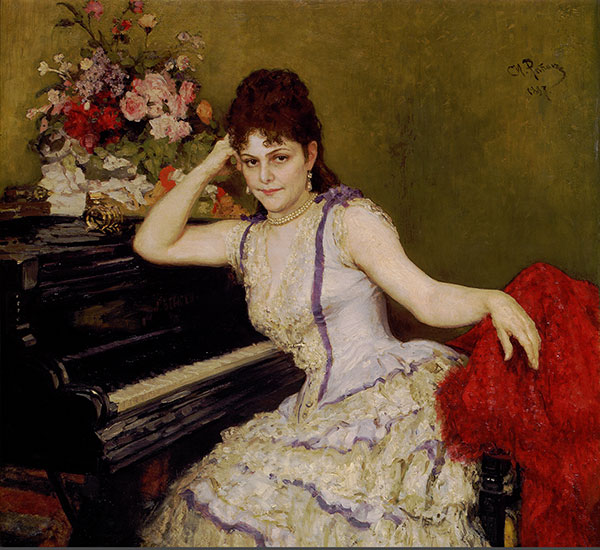 |
|
Portrait of Sophie Menter by Ilya Repin. [Photo/China Daily] |
Tretyakov went on to collect more paintings in the following years. It is believed that he first thought about establishing a national gallery of Russian paintings around 1860. That year, he stated in a will: "I bequeath the sum of 150,000 silver rouble for the foundation of an art museum or a public picture gallery in Moscow ..."
Tretyakov purchased many realist paintings that stood as testaments of the artists' sympathy for the oppressed. The collection includes Drowned Woman from 1867, in which its creator Vasily Perov, a founding member of the Peredvizhniki, used a young woman's tragedy to criticize authorities' indifference to ordinary people.
His collection of such paintings shows his concern for social issues. He also stated in his will that he would leave several thousand rouble for poor women to get married.
Tretyakov had a fascination for nature and collected landscape paintings. But he didn't consider a good landscape to be something with just "beautiful scenery, a magnificent composition, brilliant lighting or miracles".
"Let it be a dirty pool, but let it be real and poetic. There is poetry everywhere - and the task of an artist is to see and show this," he once explained in a letter to an artist.
The landscapes displayed at the Beijing show include pieces by Issac Levitan. Autumn Day, Sokolniki was painted by Levitan when the artist was 19.
Tretyakov first saw it at a Moscow exhibition for students of painting, sculpture and architecture in 1880. Captivated by the ineffable grief in it, he bought the painting.
Tretyakov also developed an interest in portraits. He commissioned painters to make portraits of famed Russian music composers, writers and creative people at the time. Those who sat for his projects included Lev Tolstoy, Anton Chekhov and Alexander Ostrovsky, all works presently on display at the Beijing show.